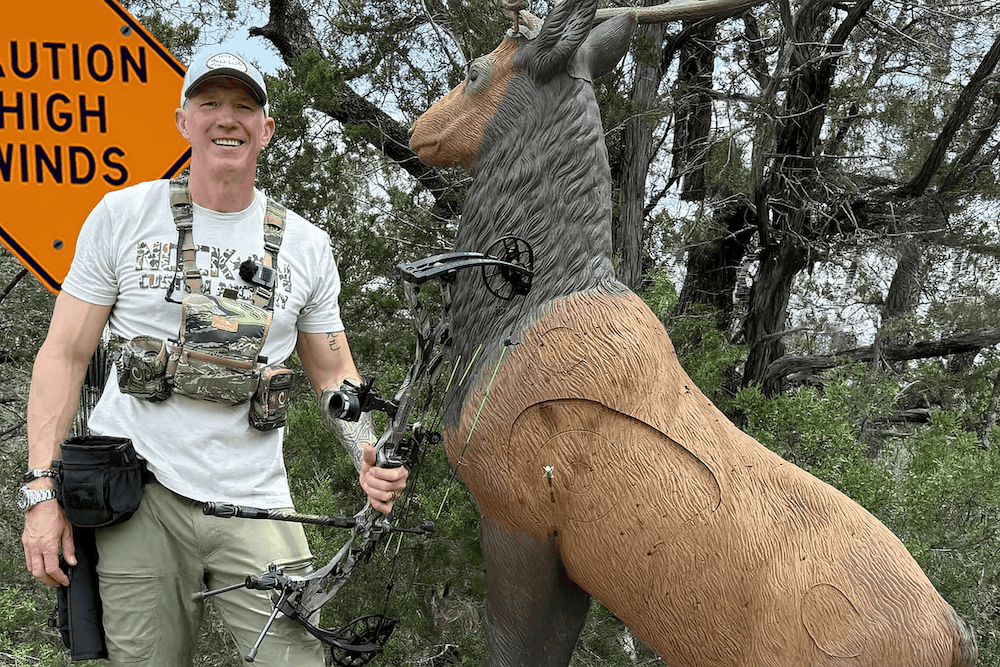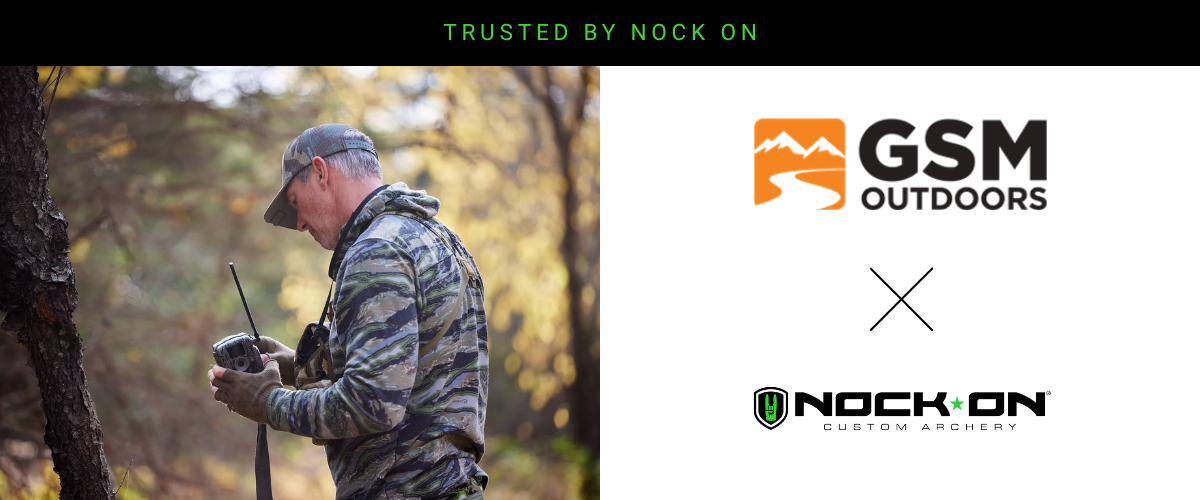When Texas wind meets precise archery at 67 yards, you’re about to learn what your gear and technique are truly made of.
Standing at Target One of the Nock On course at Total Archery Challenge Texas, I faced exactly this scenario — a seemingly straightforward shot complicated by a persistent right-to-left crosswind that demanded more than just good form.
This shot is the perfect opener for my “Making the Shot” series because it demonstrates one of bowhunting’s most unpredictable variables. Wind doesn’t just challenge your aim; it tests your decision-making and commitment when everything is in motion.
Wind Reading and Arrow Ballistics in Real Time
Every serious archer needs to understand their arrow’s ballistics in the wind. Not textbook theory, but real-world behavior specific to your setup. At 67 yards with a right-to-left Texas breeze pushing across the shooting lane, I had two options: adjust my aim point or modify my bow position.
I placed my first arrow just left of the 12-ring on the elk target. Not perfect, but still a killing shot in hunting conditions. The wind actually increased during my shot execution, demonstrating exactly why wind reading can’t be a one-time assessment before drawing.
TAC is a great place to learn your ballistics. Learn how much your arrow in the wind actually is going to blow over. This knowledge doesn’t come from a chart or app — it comes from experience watching your arrows in flight under varying conditions. There are a lot of variables at play, but putting in reps with your own gear in the wind helps you learn through experience and apply it on the fly.
The most practical wind-reading method remains surprisingly low-tech. Watch the natural indicators around you. If the grass is blowing at a certain speed and angle, you need to know exactly how much that affects your arrow at 20, 40, or 70 yards. This isn’t guesswork; it’s building a mental database of cause and effect specific to your setup.
Technique Adjustments: Canting vs. Holding Off
Many archers instinctively try to aim off the target when compensating for wind — holding into the wind, hoping drift will carry the arrow to the target. This can work, but when the wind is lighter and more variable I prefer a more technical approach with my setup using the sight bubble.
Instead of moving my aiming point, I utilized my sight’s bubble level to introduce a slight cant into my bow position. I tipped my top limb a little bit right, so my bubble was about a quarter bubble on the left edge of my line. This technique essentially puts a little English on the arrow, introducing a slight sideways component to the arrow’s initial flight path to counteract the wind.
The technique of “bubbling into the wind” is simple. The arrow will slightly fade in the direction of the top limb lean. This is why a bubble is important in the scope because your arrow flight will be down the center when the bubble is centered. But when you tip the top of the bow to the right, the arrow’s flight fades right, or vice versa.
This approach offers two advantages: First, it keeps your pin on the target rather than floating in space, and second, it subtly adjusts the arrow’s initial flight path, which can be more precisely controlled than estimating wind drift at a distance.
Learning the Lean
When I was first taught this method in target archery, I spent time practicing with my bubble position to see where the impact would end up. I would send groups downrange with my bubble tilted 1/4 across the centerline, then 1/2 bubble, then nearly a full bubble, observing where the impacts occurred downrange at different distances. This led to me knowing my “lean” or “cant” and what it meant to impact. Then I learned to apply it.
Commitment Is King: Conquering Tension Releases in Wind
“How do you shoot a tension release in the wind?” It’s one of the most common questions I hear at TAC events. The answer is simple but challenging to execute: absolute commitment.
My tension-activated release doesn’t care if the pin is floating or rock solid — it will fire when the required pressure threshold is met regardless of conditions.
When shooting a tension or back-tension release in wind, hesitation kills accuracy. Once you’ve let off that safety and committed to the shot process, you must follow through completely. I literally tell myself, “Give it gas, give it gas, give it gas, commit.”
This doesn’t mean recklessly punching the release, oh no. The shot execution remains controlled and deliberate, but with the mental commitment to see it through once started. Your follow-through must remain consistent even when your sight picture isn’t.
I know beforehand that I’ll be “unsteady,” but I don’t let that affect my confidence. Instead, I lower my expectations for stability while raising my expectation of maintaining confidence in pulling through rather than punching it off.
Knowing When to Cancel
Commitment doesn’t mean forcing shots when conditions become extreme. There’s a critical difference between shooting through manageable wind and battling a gust that completely disrupts your form.
“If you get gusted off, get your finger back on the safety, cancel that shot, and wait for a lull,” I emphasized. This discipline — knowing when to let down — often separates experienced archers from beginners. I often argue, “My best shots are the ones I knew not to force into happening.”
Wind rarely maintains constant speed and direction. It pulses and ebbs, creating windows of opportunity. After canceling a shot during a strong gust, I wait patiently for that settling moment — when the trees slow their dancing and the grass relaxes — before drawing again.
Conclusion: Confidence Through Experience
Making shots in the wind isn’t about hoping for the best — it’s about calculated decisions based on experience. My slightly left-of-center hit on Target One represents exactly the learning process I encourage all archers to embrace. Each arrow teaches you something if you’re paying attention.
What separates consistent archers from occasional shooters is their response to that first arrow. Did they learn from it? Can they apply that information to the next shot? Do they understand not just that the arrow drifted, but why, and by exactly how much?
As I lowered my bow after that first shot of the TAC event, I wasn’t disappointed with missing the 12-ring. Instead, I was happy for a successful vital hit in very tricky conditions. I was cataloging another data point in my mental ballistics library — knowing exactly how my specific setup performs in a quantifiable wind condition at a precise distance.
That’s not just making a shot. That’s building the experience that allows you to make the shot when it matters most.






 massmonopoly
massmonopoly